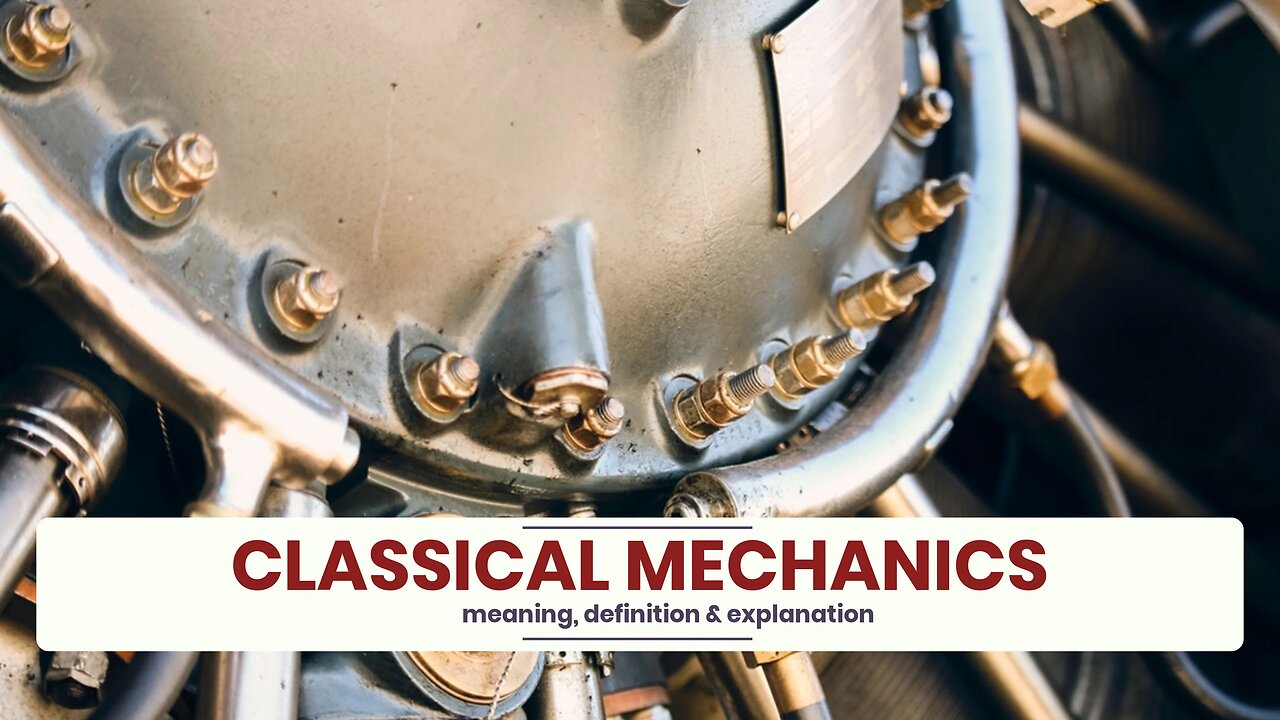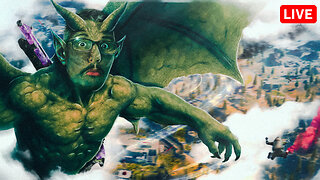Premium Only Content

What is CLASSICAL MECHANICS?
✪✪✪✪✪
http://www.theaudiopedia.com
✪✪✪✪✪
What does CLASSICAL MECHANICS mean? CLASSICAL MECHANICS meaning - CLASSICAL MECHANICS definition - CLASSICAL MECHANICS explanation. What is the meaning of CLASSICAL MECHANICS? What is the definition of CLASSICAL MECHANICS? What does CLASSICAL MECHANICS stand for? What is CLASSICAL MECHANICS meaning? What is CLASSICAL MECHANICS definition?
In physics, classical mechanics is one of the two major sub-fields of mechanics, along with quantum mechanics. Classical mechanics is concerned with the set of physical laws describing the motion of bodies under the influence of a system of forces. The study of the motion of bodies is an ancient one, making classical mechanics one of the oldest and largest subjects in science, engineering and technology. It is also widely known as Newtonian mechanics.
Classical mechanics describes the motion of macroscopic objects, from projectiles to parts of machinery, as well as astronomical objects, such as spacecraft, planets, stars, and galaxies. Within classical mechanics are fields of study that describe the behavior of solids, liquids and gases and other specific sub-topics. Classical mechanics also provides extremely accurate results as long as the domain of study is restricted to large objects and the speeds involved do not approach the speed of light. When the objects being examined are sufficiently small, it becomes necessary to introduce the other major sub-field of mechanics, quantum mechanics, which adjusts the laws of physics of macroscopic objects for the atomic nature of matter by including the wave–particle duality of atoms and molecules. When both quantum mechanics and classical mechanics cannot apply, such as at the quantum level with high speeds, quantum field theory (QFT) becomes applicable.
The term classical mechanics was coined in the early 20th century to describe the system of physics begun by Isaac Newton and many contemporary 17th century natural philosophers, and is built upon the earlier astronomical theories of Johannes Kepler, which in turn were based on the precise observations of Tycho Brahe and the studies of terrestrial projectile motion of Galileo. Since these aspects of physics were developed long before the emergence of quantum physics and relativity, some sources exclude Einstein's theory of relativity from this category. However, a number of modern sources do include relativistic mechanics, which in their view represents classical mechanics in its most developed and most accurate form.
The earliest development of classical mechanics is often referred to as Newtonian mechanics, and is associated with the physical concepts employed by and the mathematical methods invented by Newton, Leibniz, and others. Later, more abstract and general methods were developed, leading to reformulations of classical mechanics known as Lagrangian mechanics and Hamiltonian mechanics. These advances were largely made in the 18th and 19th centuries, and they extend substantially beyond Newton's work, particularly through their use of analytical mechanics.
The following introduces the basic concepts of classical mechanics. For simplicity, it often models real-world objects as point particles (objects with negligible size). The motion of a point particle is characterized by a small number of parameters: its position, mass, and the forces applied to it. Each of these parameters is discussed in turn.
In reality, the kind of objects that classical mechanics can describe always have a non-zero size. (The physics of very small particles, such as the electron, is more accurately described by quantum mechanics.) Objects with non-zero size have more complicated behavior than hypothetical point particles, because of the additional degrees of freedom: a baseball can spin while it is moving, for example. However, the results for point particles can be used to study such objects by treating them as composite objects, made of a large number of collectively acting point particles. The center of mass of a composite object behaves like a point particle.
Classical mechanics uses common-sense notions of how matter and forces exist and interact. It assumes that matter and energy have definite, knowable attributes such as where an object is in space and its speed. Non-relativistic mechanics also assumes that forces act instantaneously.
-
 2:24
2:24
The Audiopedia
10 months agoWhat is AUSTERITY?
83 -
 LIVE
LIVE
FreshandFit
2 hours agoAfter Hours w/ Girls
8,518 watching -
 2:06:07
2:06:07
TimcastIRL
3 hours agoDemocrats LOSE IT Over SECOND Liberal Judge ARRESTED By Trump Admin | Timcast IRL
124K77 -
 LIVE
LIVE
Man in America
18 hours agoEXPOSED: Trump's COVERT War Against the European Banking Cartel w/ Tom Luongo
1,491 watching -
 1:45:48
1:45:48
Glenn Greenwald
7 hours agoGlenn Reacts to News of the Week; Plus: Audience Q&A | SYSTEM UPDATE #443
70.2K48 -

Dr Disrespect
12 hours ago🔴LIVE - DR DISRESPECT - PUBG - 5 CHICKEN DINNERS CHALLENGE
159K17 -
 LIVE
LIVE
I_Came_With_Fire_Podcast
11 hours agoSHALL NOT BE INFRINGED| THE TYRANNY OF UNELECTED BUREAUCRATS | XI BOWS
309 watching -
 LIVE
LIVE
SynthTrax & DJ Cheezus Livestreams
13 hours agoFriday Night Synthwave 80s 90s Electronica and more DJ MIX Livestream THE GREAT EDO WARS OF 2067 Edition
341 watching -
 LIVE
LIVE
RalliedLIVE
3 hours ago $0.71 earnedWarzone Domination w/ Ral
183 watching -
 1:10:17
1:10:17
Sarah Westall
5 hours agoWorld Leaders Increasingly Display Panic Behavior as Economic Change Accelerates w/ Andy Schectman
34.5K9